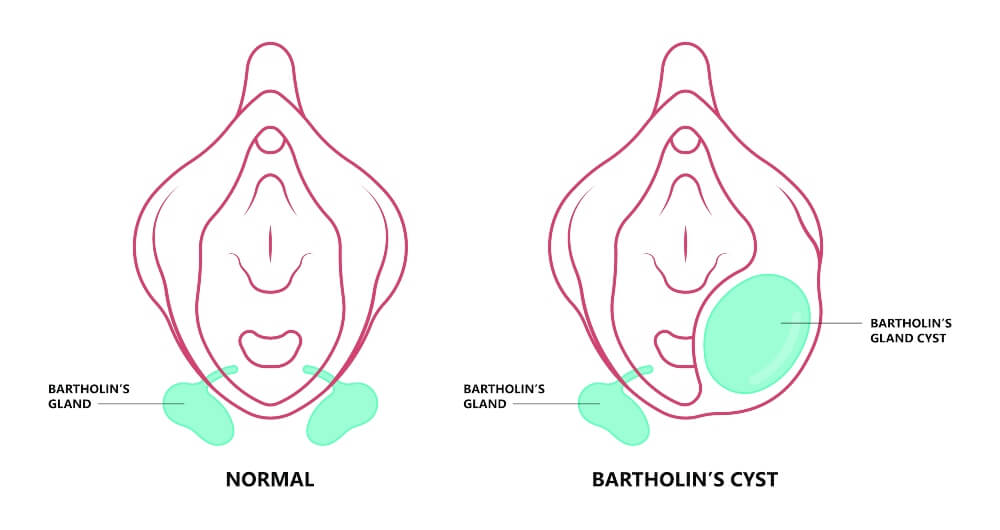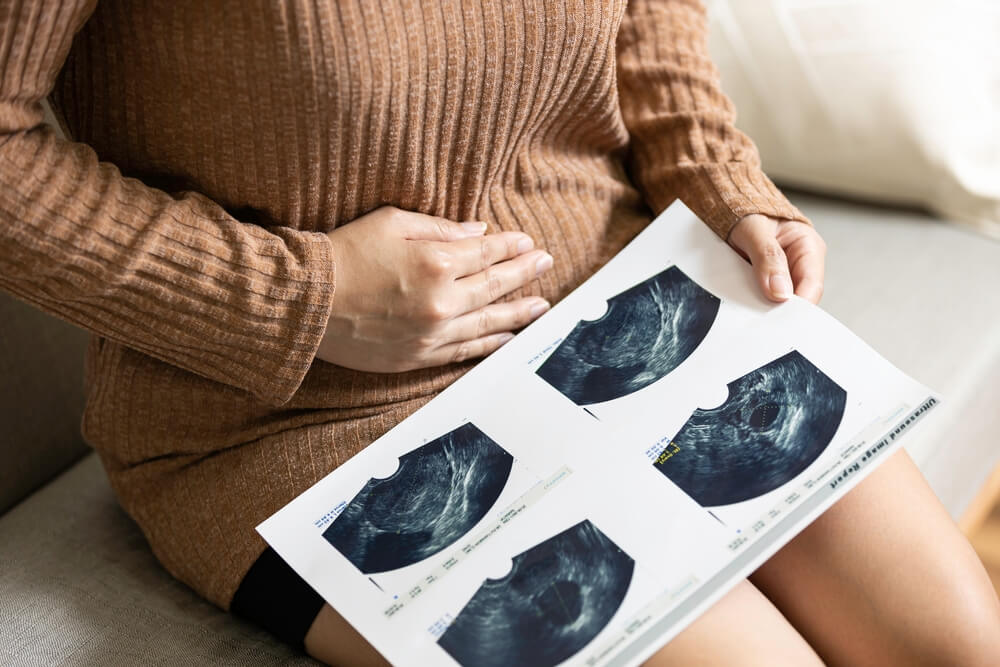Due to the Bartholin gland blockage in the vagina, it’s possible to develop the condition known as the Bartholin’s cyst. This vaginal cyst can present itself as a lump and cause a variety of issues, such as pain and irritation during sitting, walking, or engaging in sexual intercourse. Bartholin cyst treatment sometimes is not necessary when the condition goes away on its own. But in the case of infection, necessitates medical assistance. If you’re worried about vaginal and vulvar cysts or simply wish to improve your well-being, you’re welcome to explore the benefits of gynecological treatment in Tamarac, FL. That said, let’s discuss the matter of Bartholin’s cyst in more detail.
What Is a Bartholin’s Cyst?
Bartholin’s cysts are a type of benign vulvar cysts that develop on vaginal lips close to the vaginal opening. The condition gets its name from the Bartholin glands, a pair of tiny glands that secrete mucus to keep things smooth in the genital area. The vulva includes the labia and Bartholin’s glands, both of which are essential to female reproduction.
When there is a blockage of the gland opening, the mucus builds up and forms a lump; this is called a Bartholin’s cyst. Commonly, it affects only one of the Bartholin glands. Small vulvar cysts often don’t create any symptoms. A vaginal cyst can develop into an abscess if it becomes infected. When infected, Bartholin’s cyst can cause significant discomfort and may warrant medical attention.
Symptomatically, Bartholin’s cysts manifest as discrete, spherical, subcutaneous lumps on the vaginal lips (labia). Most of the time, they cause no discomfort. A red, painful, and swollen appearance may develop in some people if an infection sets in. In some cases, the cyst in the vaginal wall may appear to be swollen or filled with fluid. These cysts range in size from the width of a pea to that of a golf ball. It could also make one side of the labia look bigger than the other.
Only about two percent of women will develop a Bartholin’s cyst during their lifetime. Women of childbearing age have a higher risk of getting it. Developing this cyst in the vaginal wall becomes less likely after menopause.

Potential Symptoms of the Condition
The majority of Bartholin’s cysts are painless and only slightly irritating. When a Bartholin’s cyst becomes infected and develops an abscess, it can cause a variety of symptoms, such as:
- The painful or uncomfortable sensation during sexual intercourse, sitting, walking, or wiping
- Tenderness, swelling, and/or redness
- Chills or fever
- Vaginal cyst drainage and/or growth
Bartholin’s cyst pain can be relieved with over-the-counter pain medicines and home treatments, including sitz baths, in which the affected area is submerged in warm water several times a day. It also has a fair probability of going away on its own. Still, severe pain and infection require medical treatment.
Don’t hesitate to get in touch with Dr. Andrew Krinsky, MD at Gynecology & Women’s Wellness, if you notice any of the mentioned infection symptoms, or if you’re interested in general gynecological health and wellness services.
What Could Cause the Cyst to Form?
The vast majority of Bartholin’s cysts never get infectious and are not contagious through direct skin contact. However, highly contagious STIs such as gonorrhea or chlamydia could cause the formation of a cyst in the vaginal wall.
An infection with E. coli or other bacteria can lead to the development of a Bartholin’s cyst. Infection with these bacteria can cause a blockage in the Bartholin gland. Vulvar skin irritation, injury, or vulvar overgrowth could also trigger the condition.
A Bartholin cyst is diagnosed by a doctor after a thorough physical examination. They’ll inspect the cyst for infection and see how big it is. In the event that the cyst is filled with fluid, your doctor may examine the fluid for signs of bacterial or sexually transmitted illnesses. Biopsies can be used to rule out vulvar cancer in women over the age of 40.
If your doctor suspects that the cyst in the Bartholin gland is malignant, they may recommend the removal of the gland surgically. Cancer of the Bartholin gland is unusual but more frequent in women older than 60.
Bartholin Cyst Treatment Options

Bartholin cyst treatment is symptomatic. There may be no need to treat a cyst if it is small, painless, and does not appear infectious. On the other hand, an abscess may form and, if severe enough, may require surgical drainage. That said, treatment options are as follows:
- Sitz baths involve sitting in a tub filled with warm water (about three to four inches) multiple times daily for several days. The soothing and restorative effects of this practice may also aid in the natural rupture and drainage of the infected cyst.
- OTC pain relievers should be used as prescribed.
- Your doctor may advise you to take antibiotics if your cyst turns infectious or if you test positive for some STIs.
- If the cyst is very infected and rather big, your doctor may recommend surgery to drain the fluid. To drain the cyst, a catheter must be placed inside of it. After the drainage process has finished, the catheter is typically retained in place for a few more weeks.
- The marsupialization process entails opening the cyst surgically and letting the fluid drain out. The surgeon will next create an open pocket in the cyst wall by stitching its edges together. Treatment of recurring Bartholin’s cysts with this method is typically successful.
- Surgery to remove Bartholin glands may be recommended if all other conservative treatments fail.
Your doctor should decide how best to treat your Bartholin’s cyst. It is advisable to consult your physician before attempting any self-care, even if it is something doable at your own home. Avoid the temptation to squeeze or drain a cyst, as doing so could spread infection and worsen your condition.
The severity and likelihood of infection of a Bartholin’s cyst will affect how long you might expect to deal with it. Cysts usually disappear entirely within a couple of weeks. Your doctor will be able to give you a better idea of how long you’ll have to manage the symptoms once the cyst has been inspected.
You can’t stop a Bartholin’s cyst from forming, but you can lessen your chances of developing complications that lead to infections by practicing proper hygiene and always using condoms when engaging in sexual intercourse. Although STIs are known to be one of the factors that might lead to a Bartholin’s cyst, the cyst itself is not regarded as a sexually transmitted disease.
A painful lump in the vaginal region should prompt a visit to the doctor to rule out an infection.
Don’t be afraid to discuss your symptoms and worries openly. After examining the region, the doctor can determine what’s wrong and how to fix it. We encourage you to make an appointment at Gynecology & Women’s Wellness if you want to improve your health and enjoy exceptional gynecological care.


